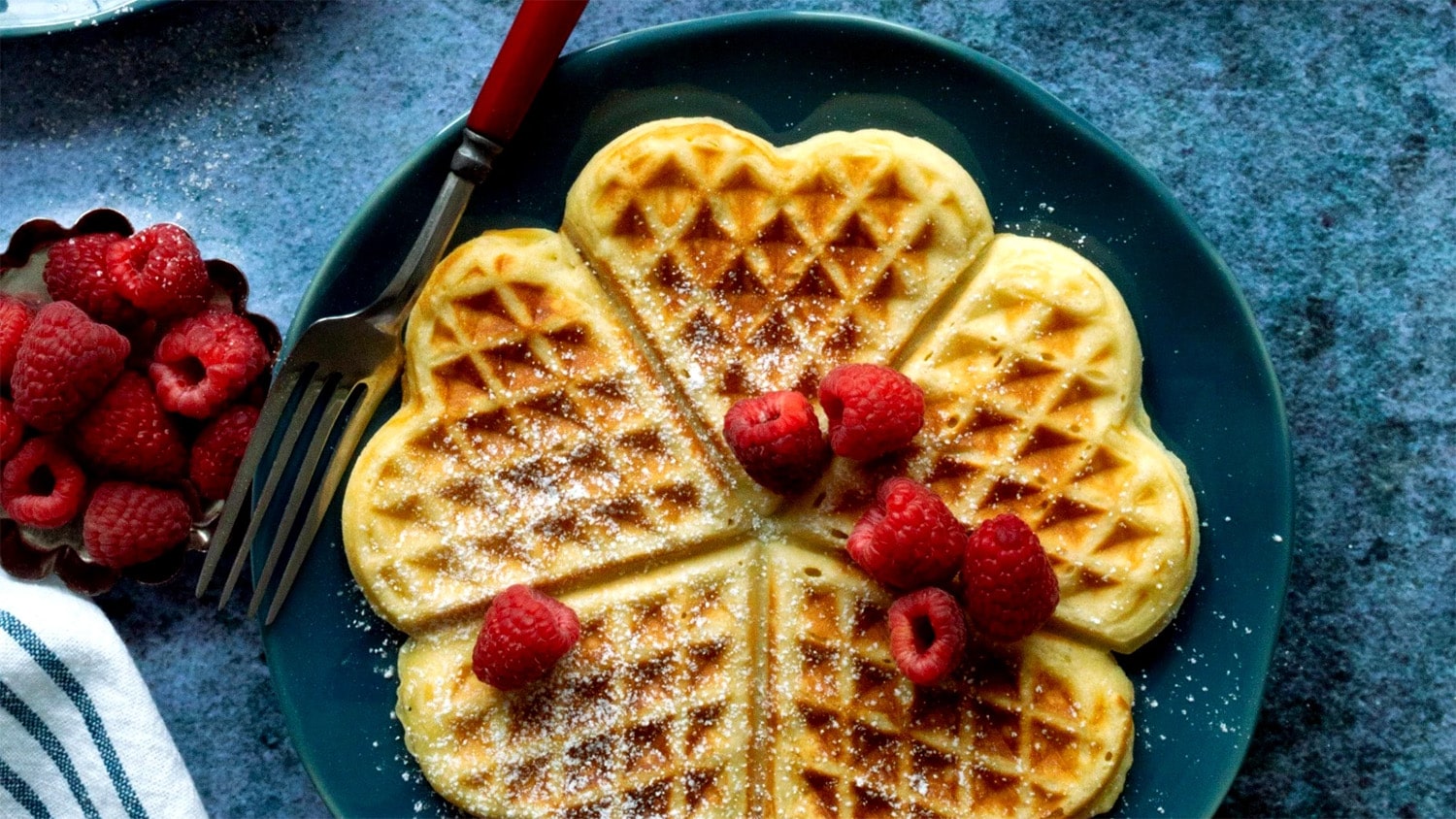
29 interesting facts about Waffles
- 👁️ 983
It appears there might be a misunderstanding in your request, as “Fall of the Waffles” isn’t a recognized historical event or a commonly known topic. It’s possible you’re referring to something specific that I’m not aware of, or it might be a playful or hypothetical concept. However, waffles themselves have a rich and delightful history that spans centuries and cultures. Originating in the Middle Ages, waffles have evolved from simple flat cakes cooked over an open fire to a beloved international breakfast staple. Here are 29 interesting and informative facts about waffles, embracing their culinary journey and significance.
- The word “waffle” has Dutch origins, coming from the word “wafel.”
- Waffles date back to the Middle Ages, where they were cooked over an open fire using two metal plates with wooden handles.
- The earliest waffles didn’t contain sugar but were often flavored with spices like cinnamon.
- The modern waffle iron with a honeycomb pattern was patented by Cornelius Swarthout in 1869.
- Belgium is renowned for its waffles, with the Belgian waffle making its international debut at the 1964 New York World’s Fair.
- There are over a dozen different types of Belgian waffles, but the Liege and Brussels waffles are the most famous outside of Belgium.
- The Liege waffle is denser and sweeter, containing chunks of pearl sugar that caramelize on the outside when baked.
- In contrast, Brussels waffles are lighter, crisper, and often served with whipped cream, strawberries, or chocolate.
- Waffle Day originated in Sweden due to a linguistic misunderstanding, where Vårfrudagen (Our Lady’s Day) sounded like Våffeldagen (Waffle Day).
- Frozen waffles were invented by Frank Dorsa, who created a process to cook and freeze waffles in the 1950s, leading to the birth of Eggo waffles.
- The world record for the largest waffle weighs 50 kg (110 lb 3.68 oz) and was made in the Netherlands.
- Waffles can be sweet or savory, with toppings ranging from maple syrup and chocolate to fried chicken and bacon.
- The first known recipe for waffles appeared in the anonymous 14th-century manuscript, Le Ménagier de Paris.
- In some cultures, waffles are traditionally eaten as a dessert or a snack rather than a breakfast food.
- Thomas Jefferson brought a long-handled waffle iron to America from France in the 1790s.
- Waffles were sold as street food in medieval Europe, often outside of churches.
- The characteristic grid pattern of waffles increases their surface area, allowing for more efficient heat distribution and a crispy texture.
- During the 19th century, waffle frolics or parties were popular in America, where guests were served waffles topped with syrup.
- Stroopwafels, a popular Dutch treat, consist of two thin waffles stuck together with a caramel-like syrup filling.
- Waffles became part of the American breakfast tradition in the early 20th century, thanks to their convenience and the invention of electric waffle irons.
- The Brussels World’s Fair in 1958 was a pivotal event for popularizing Belgian waffles.
- Waffle cones were purportedly invented at the 1904 World’s Fair when an ice cream vendor ran out of dishes and improvised with rolled-up waffles.
- Norway has its own variety of waffles that are heart-shaped and typically served with sour cream and jam.
- The batter for waffles can be made from scratch or from pre-made mixes, with variations including whole wheat, vegan, and gluten-free options.
- In addition to breakfast, waffles are also used as a base for desserts and even sandwiches.
- The 3D structure of waffles has inspired designers and engineers in creating materials and structures that are lightweight yet strong.
- Waffle Day is celebrated on March 25th in Sweden and on August 24th internationally.
- The versatility of waffles makes them a popular choice for chefs and home cooks alike, who experiment with different flours, yeasts, and toppings.
- Some of the earliest waffle irons depicted images of Jesus, coats of arms, or landscapes, making each waffle a piece of art.
Waffles have journeyed from humble beginnings to become a cherished part of global cuisine, showcasing the adaptability and creativity of culinary traditions. Their rich history reflects changes in technology, culture, and taste, proving that waffles are more than just a delicious breakfast item—they are a culinary phenomenon that continues to evolve. Whether enjoyed at a street fair, in a fine dining restaurant, or at the family breakfast table, waffles remain a beloved treat for people around the world.











